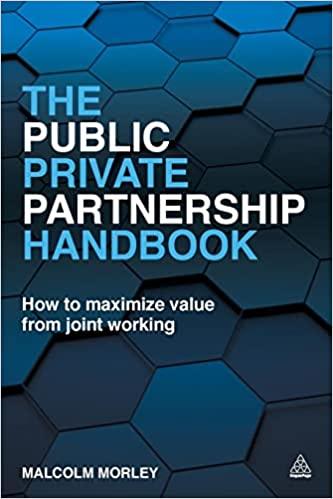Question
Calculate the Black/Scholes prices for a call option and a put option for each of the characteristics listed below: current price of underlying strike price
Calculate the Black/Scholes prices for a call option and a put option for each of the characteristics listed below:
| current price of underlying | strike price | experation | volatolity (standard deviation) |
| $100 | $100 | T = .25 | s.d. = .20 |
| $100 | $110 | T = .25 | s.d. = .20 |
| $100 | $90 | T = .25 | s.d. = .35 |
| $100 | $100 | T = .25 | s.d. = .35 |
| $100 | $110 | T = .25 | s.d. = .35 |
| $100 | $90 | T = .25 | s.d. = .20 |
| $100 | $100 | T = .5 | s.d. = .20 |
| $100 | $110 | T = .5 | s.d. = .20 |
| $100 | $90 | T = .5 | s.d. = .20 |
For all of these, let the risk-free rate be 1%. Also, all of these options are European. I suggest building a spreadsheet. Although I have posted a spreadsheet that calculates the Black/Scholes value for both puts and calls, you should try to create your own spreadsheet. Of course, if you need help figuring out what to do, you are allowed to refer to the spreadsheet I posted on Blackboard. You do not need to turn in the electronic version of the spreadsheet; instead, just print out a screen shot of the excel page with your answers. A few things to note: One thing you will see in the posted spreadsheet is that you can get N(d1) and N(d2) by calculating d1 and d2 and then using the excel function NORMSDIST(cell) to give you N(), where cell is the cell address for the value of d1 or d2. Also, there is a relationship that must hold between the prices of puts and calls with the same underlying asset and the same expiration date and strike price. This relationship is called put/call parity. It states that the price of a put (denoted p) is the following function of the price of the call (denoted c) written in the same underlying asset (with the same strike price and expiration date):
p = c [ S0 Xexp(-rT) ], where S0 is the current price of the underlying security, X is the strike price (or exercise price), exp(-rT) denotes exp raised to the negative of the risk-free rate r times the time to expiration T (measured in years).
Problem 2: You are a trader who trades both puts and calls on Procter and Gamble. Information about current market conditions is displayed below.
| stock price | exercise price | experation date | call price | put price |
| 75 | 75 | 1/12 of the year | 3.447 | 5 |
| 75 | 80 | 1/12 of the year | 2.131 | 8 |
The annualized continuously-compounded risk-free rate is .02 (6%).
1. Given the information above, are there any arbitrage opportunities? Hint: Check put-call parity.
2. If no, explain why. If yes, describe one set of trades you could make now to exploit the arbitrage opportunity. Show that this strategy generates an arbitrage profit.
Step by Step Solution
There are 3 Steps involved in it
Step: 1

Get Instant Access to Expert-Tailored Solutions
See step-by-step solutions with expert insights and AI powered tools for academic success
Step: 2

Step: 3

Ace Your Homework with AI
Get the answers you need in no time with our AI-driven, step-by-step assistance
Get Started


